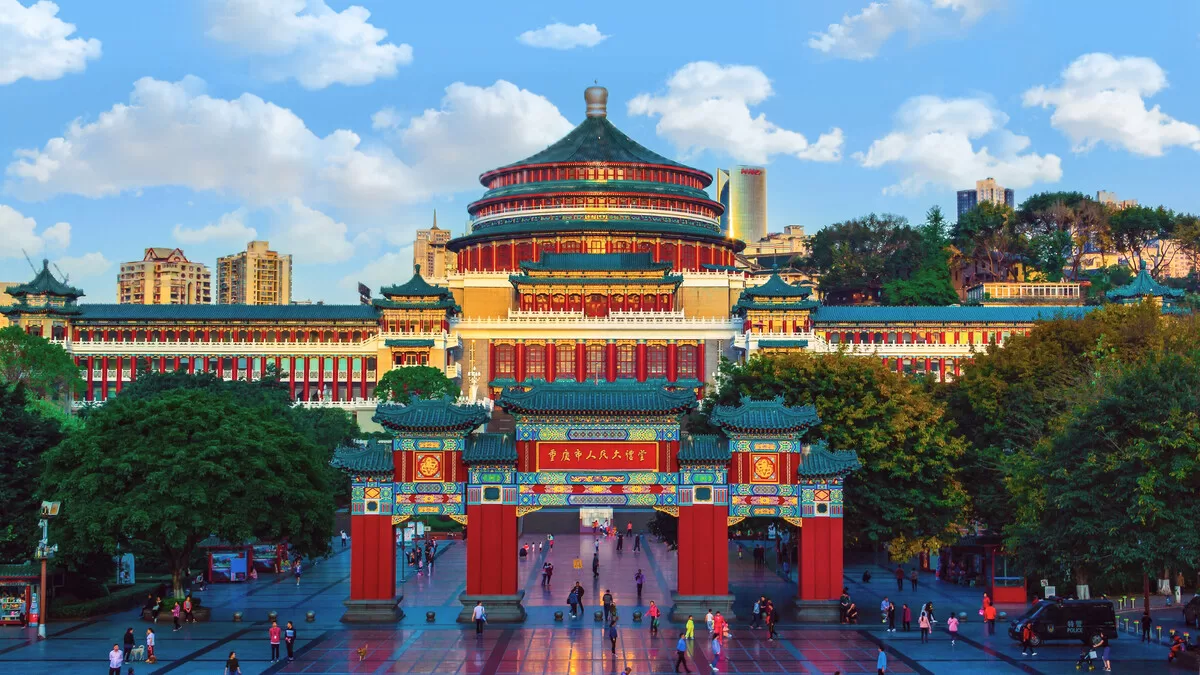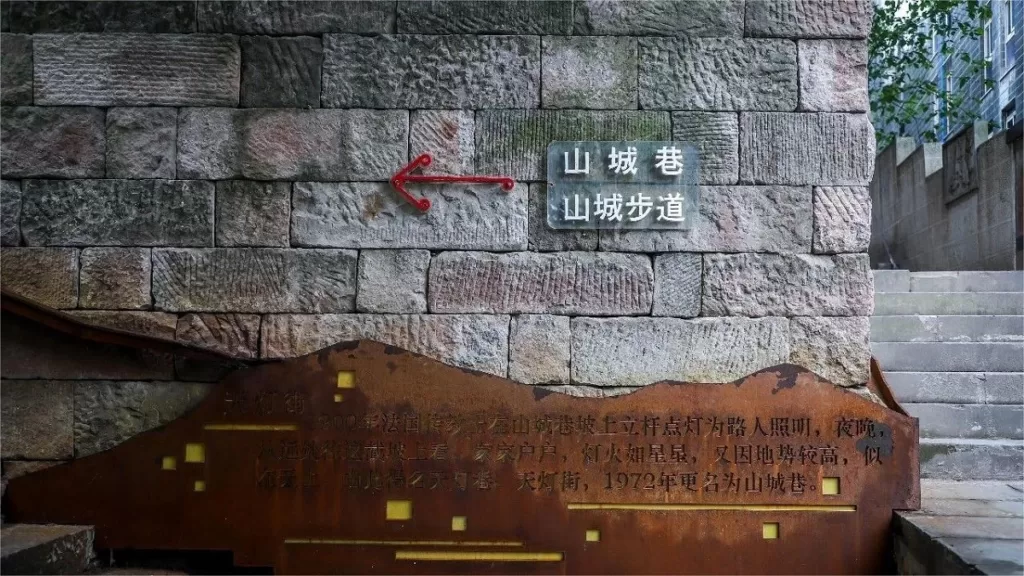The Great Hall of the People in Chongqing (重庆人民大礼堂) stands as an enduring testament to China’s architectural and cultural fusion, a convergence of Chinese palace aesthetics and Western architectural influences. This monumental structure, initially conceptualized during the peak of China’s post-revolutionary enthusiasm, has transcended its origins to become one of the most prominent symbols of Chongqing, deeply ingrained in the city’s historical and cultural narrative.
Table of Contents
- Basic Information
- Location and Transportation
- Historical Context
- Architectural Fusion
- Layout of the Building
- International Recognition
- Practical Function
- Video about the Great Hall of the People
- Useful Tips Summarized from Reviews
- Attractions near the Great Hall of People
Basic Information
| Estimated Length of Tour | 0.5 – 1 hour |
| Ticket Price | 8 RMB |
| Opening Hours | 8.00 – 18.00; Last admission: 17.30 Closed during events |
| Area | 66,000 square meters |
| Height | 65 meters |
| Capacity | Over 3400 people |
| Telephone Number | 0086-023-86527605 |
Location and Transportation
Nestled within the bustling urban landscape of Chongqing, China, the Great Hall of the People stands as a grand emblem of the city’s historical, cultural, and political significance. This monumental structure is strategically located in the heart of Chongqing’s central business district, a vibrant area that pulsates with the rhythms of modern life while paying homage to the region’s rich heritage. Its exact address is No. 173, Renmin Road, Yuzhong District, Chongqing. To get there, you can choose the following ways:
Bus: Take bus 145, 152, 181, 262, 322, 338, 421, 829, 881, or 3209, get off at the Great Hall Stop (大礼堂站), and walk about 100 meters to the south to reach the attraction.
Metro: The closest metro station to the Great Hall of the People Chongqing is Dalitang (大礼堂) on line 10. After getting out of the station from Exit 1, you will be standing right in front of the building.
Historical Context
Erected in the vibrant cityscape of Chongqing, this magnificent edifice began its journey in June 1951, a time when the nation was gripped by a fervor to construct grand halls that reflected the newfound strength and unity of the people. Completed in 1954, the Great Hall of the People emerged not only as a physical embodiment of this sentiment but also as a hub of political, artistic, and social activities. This era witnessed a trend across China, with great halls springing up in various regions, each echoing the overarching sentiment of national progress.
Architectural Fusion
Today, the Great Hall of the People in Chongqing holds an esteemed position among the top ten cultural symbols of the city. Its architectural brilliance lies in its seamless fusion of Chinese and Western elements, creating a harmonious coalescence that is both captivating and culturally significant. The grandeur of traditional Chinese palatial design is interwoven with the structural aesthetics of Western architecture, resulting in a unique and commanding presence that captures the eye and imagination.
Layout of the Building
The building is ingeniously divided into four distinct sections, each serving a specific purpose while contributing to the overall majesty of the structure. The auditorium, standing as the heart of the hall, witnessed the deliberation of significant political meetings that shaped the course of the nation’s history. Meanwhile, the eastern, southern, and northern buildings complement the auditorium’s grandeur, each serving as a functional space while exuding the same architectural grace.
International Recognition
In 1987, the Great Hall of the People in Chongqing achieved international recognition when it was ranked second in the “Comparative Architectural History” published by the British Royal Architecture. This acknowledgment underscored the building’s enduring impact on architectural discourse and its significant contribution to the evolving architectural landscape of contemporary China.
Practical Function
Beyond its political role, the Great Hall of the People has also embraced a diverse array of cultural expressions. While initially conceived as a venue for political gatherings, it has transcended this singular function to become a vibrant stage for concerts, performances, and various forms of entertainment. This transformation speaks to the building’s versatility and adaptability, showcasing its ability to evolve with the changing times while preserving its intrinsic cultural essence.
Video about the Great Hall of the People
Useful Tips Summarized from Reviews
Food Street: Next to the main entrance of the Great Hall, there’s a food street offering a variety of dining options. It’s a convenient spot to rest and grab a bite to eat if you’re tired from walking.
Quiet Photography: The majority of the Great Hall is office space, so when taking photos, particularly in the vicinity of the offices, it’s important to maintain a quiet demeanor.
Opening Hours: The Great Hall is typically open during holidays but may be closed during major events.
Lighting Hours: The building is illuminated from 19:00 to 21:30.
Interior Layout: The Great Hall has five floors, with red seats on floors 1 to 4. The 5th floor is inaccessible as it is locked. Only the restrooms on one floor are operational; the others are closed.









Chongqing’s version of the Temple of Heaven, you don’t need to make a reservation if you don’t want to go in, just go straight to Ma’anshan Hall for photos.